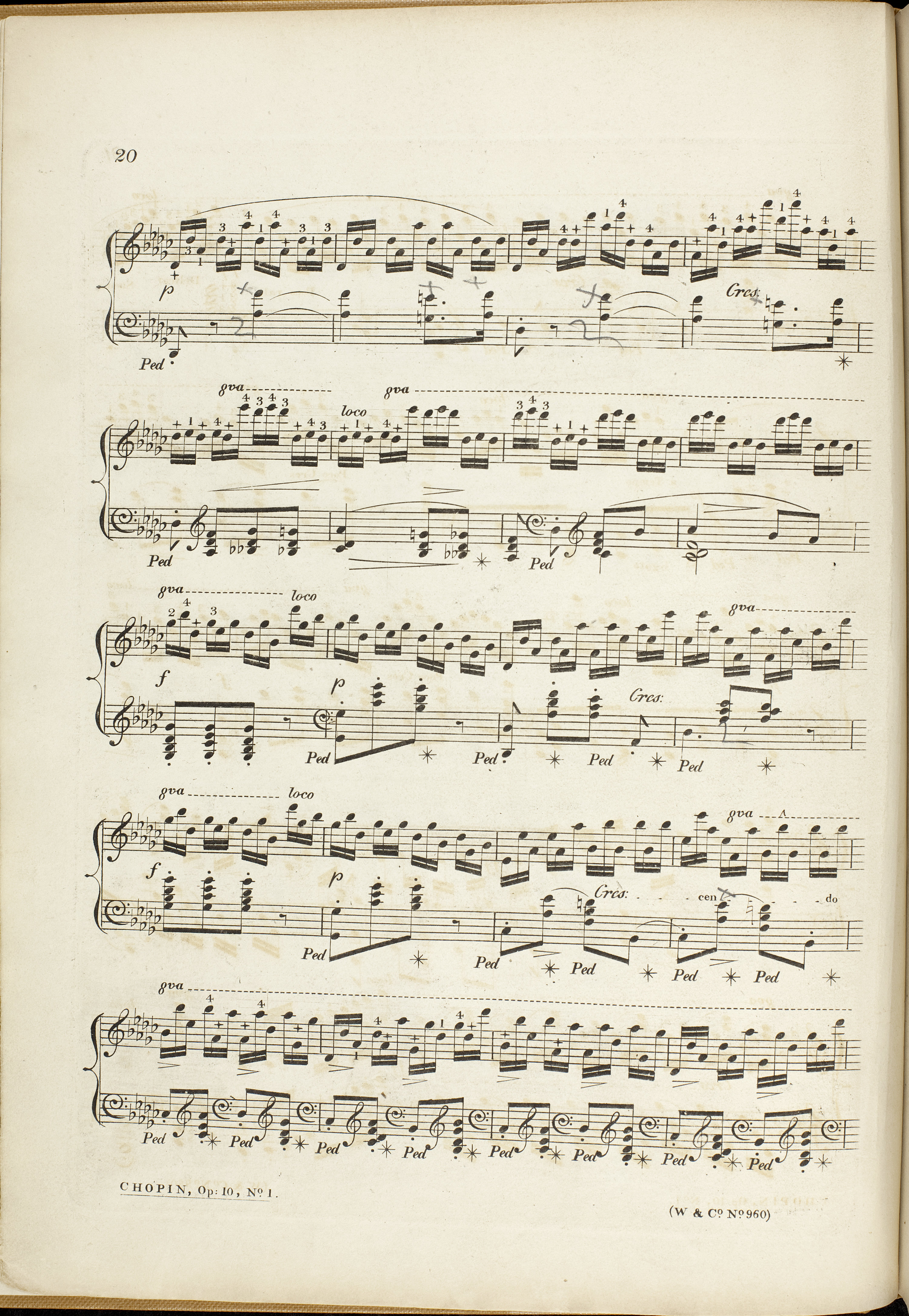



At least one of the signs of FE (→GE1,EE) was added at the time of proofreading, probably on the basis of Chopin's entry. We assume the following scenario to be plausible:
-
The signs of A, written under the part of the L.H., are reproduced in FE between the staves; the
 sign is clearly moved in relation to Chopin's notation.
sign is clearly moved in relation to Chopin's notation. -
Chopin, dissatisfied with the
 sign, adds in a proofreading the second one under the lower stave; perhaps he also extends the
sign, adds in a proofreading the second one under the lower stave; perhaps he also extends the  sign in bar 45.
sign in bar 45. -
The original
 sign between the staves, although actually unnecessary, is, however, not incompatible with the composer's intention; therefore, it is not removed (it cannot also be excluded that the engraver did not fulfill the order to remove this diminuendo).
sign between the staves, although actually unnecessary, is, however, not incompatible with the composer's intention; therefore, it is not removed (it cannot also be excluded that the engraver did not fulfill the order to remove this diminuendo).
On the basis of the aforementioned analysis, in the main text we suggest a pair of signs following the natural phrasing stemming from the notation of A; the pair may also have been a result of Chopin's correction in FE.
In GE2, and to a lesser extent in subsequent GE,s, the signs between the staves were assigned to the part of the R.H.
Compare the passage in the sources »
category imprint: Interpretations within context; Differences between sources
issues: Inaccuracies in GE, Inaccuracies in FE, Authentic corrections of FE
notation: Articulation, Accents, Hairpins





